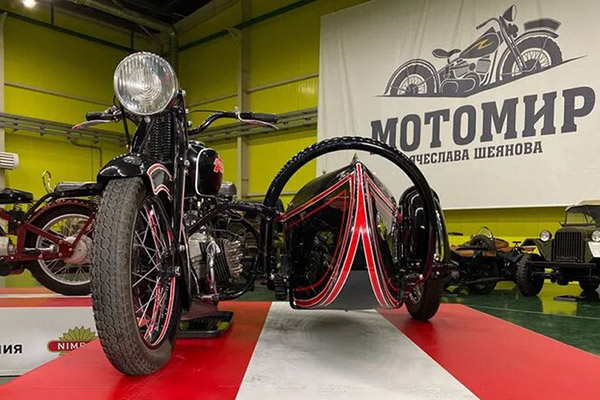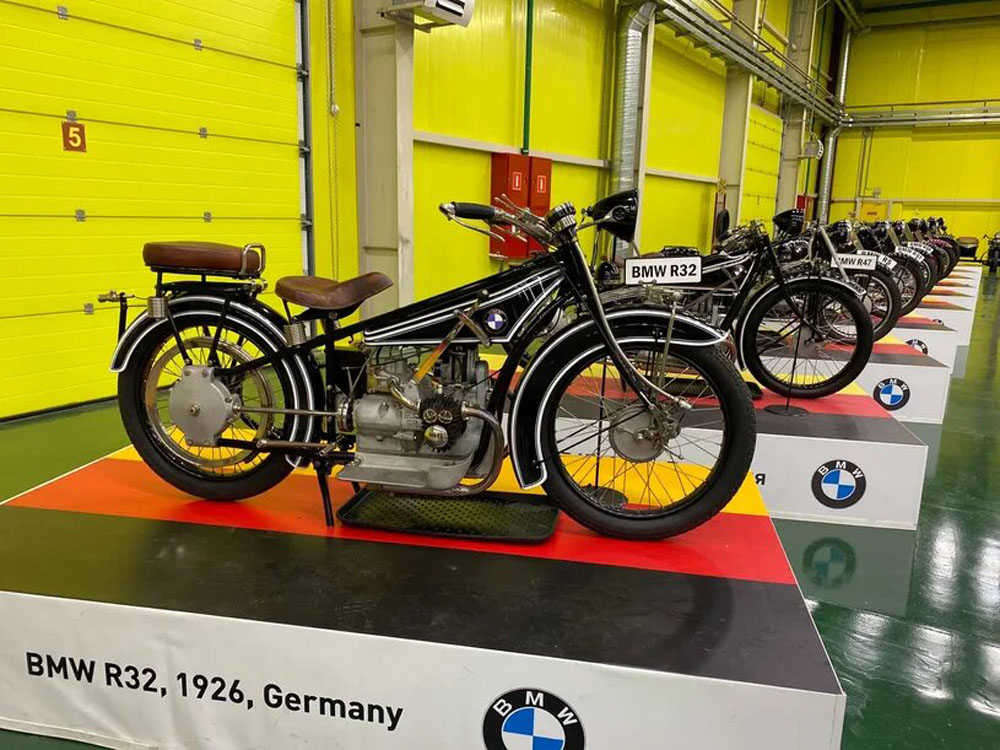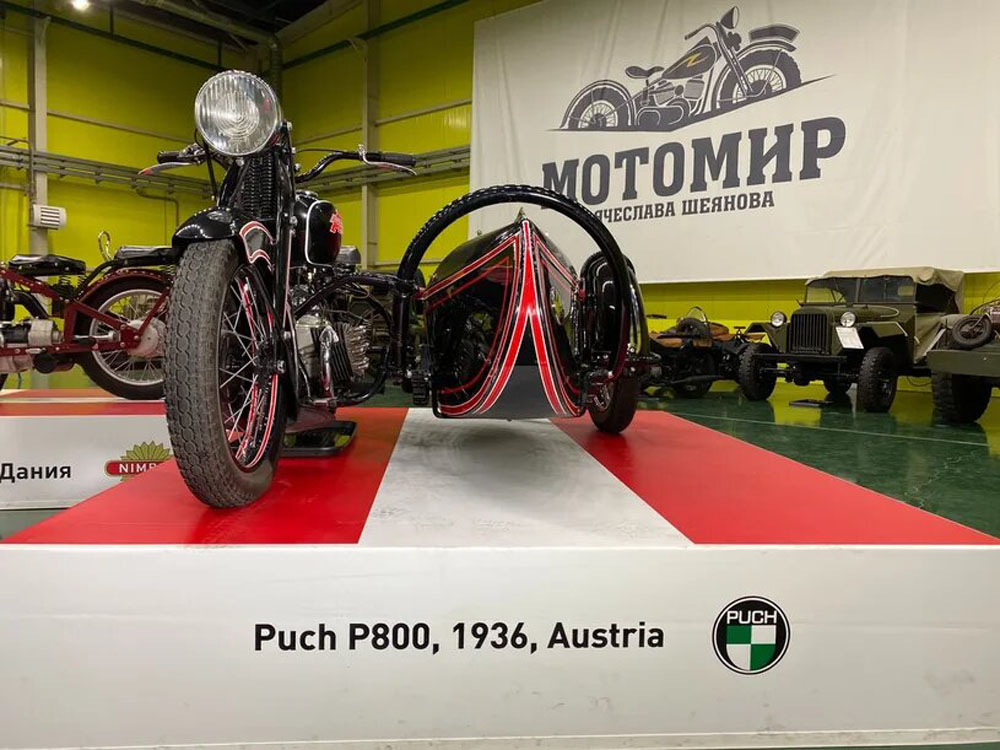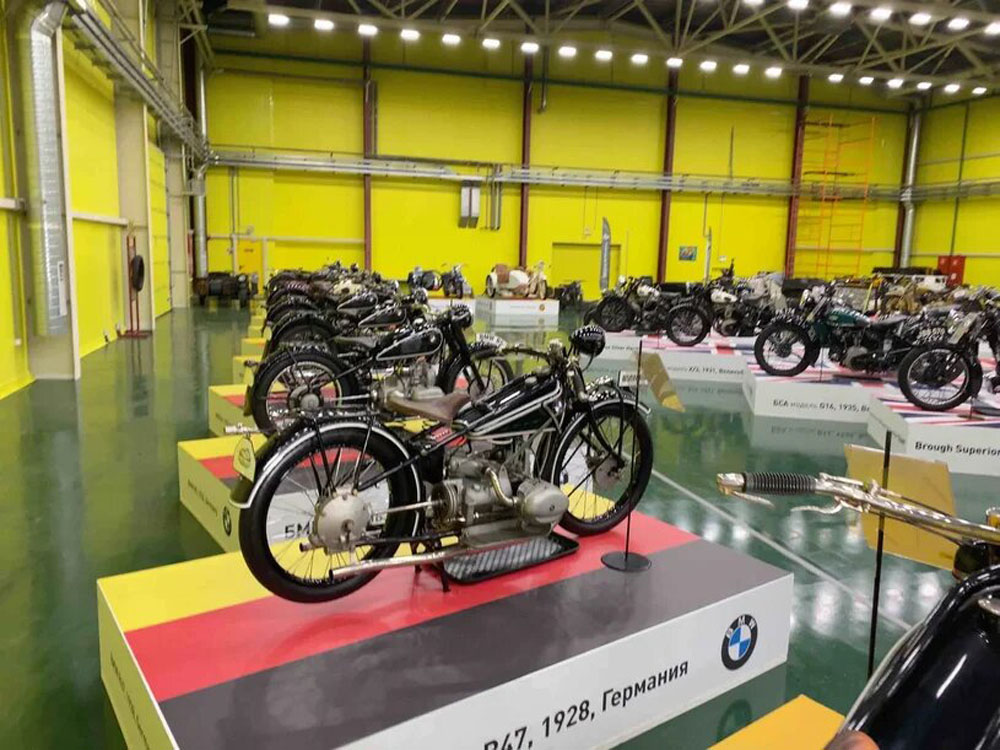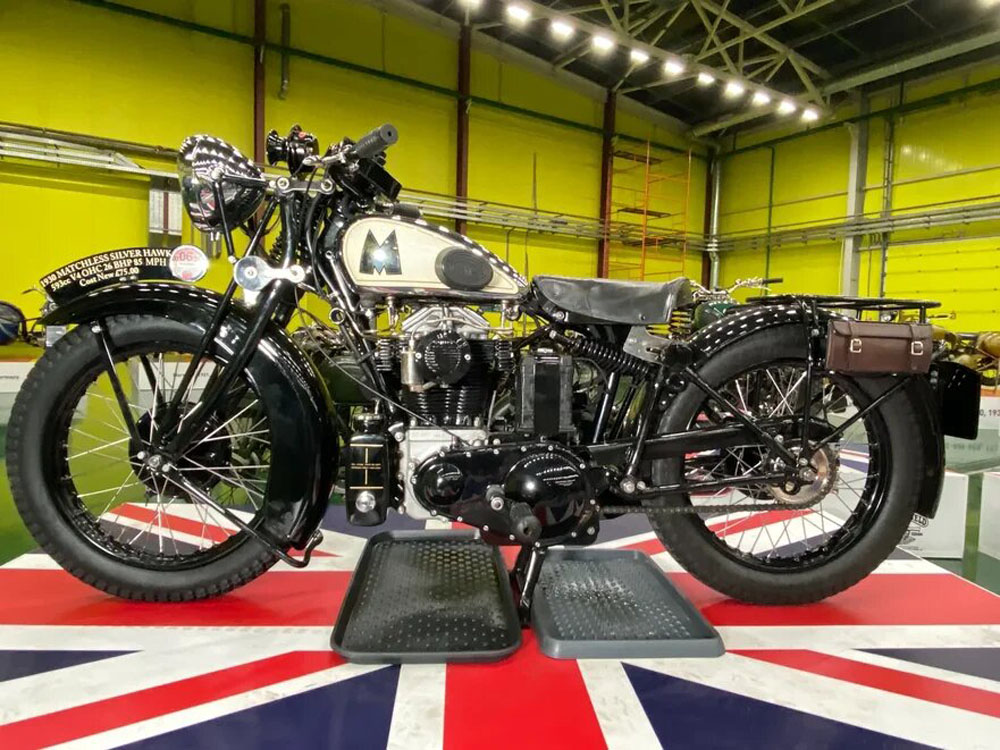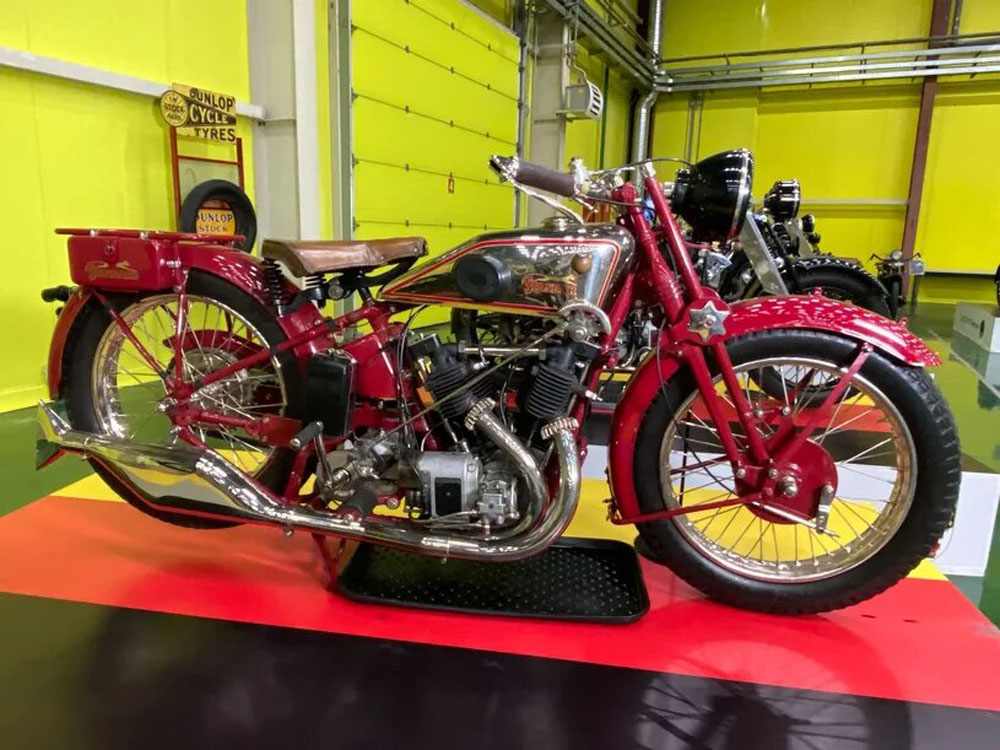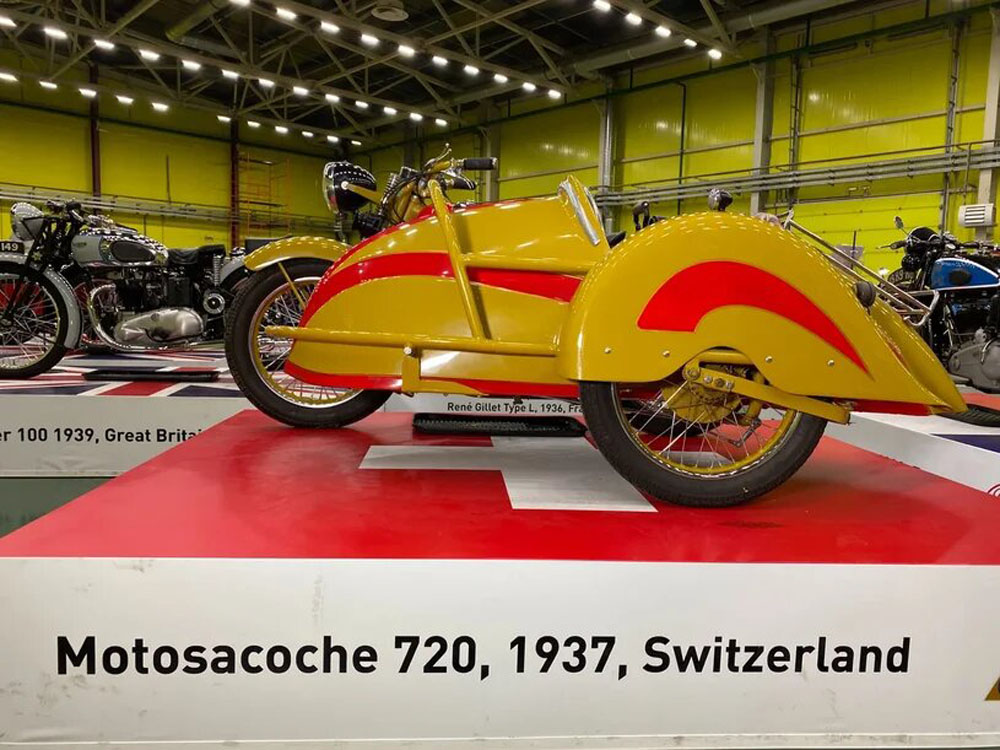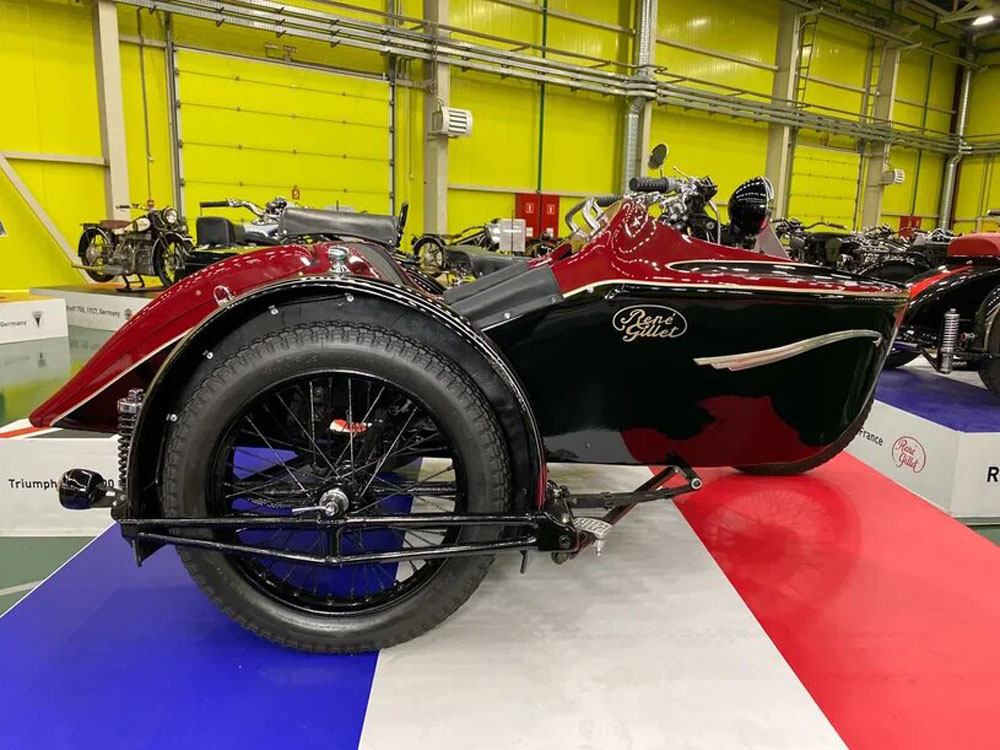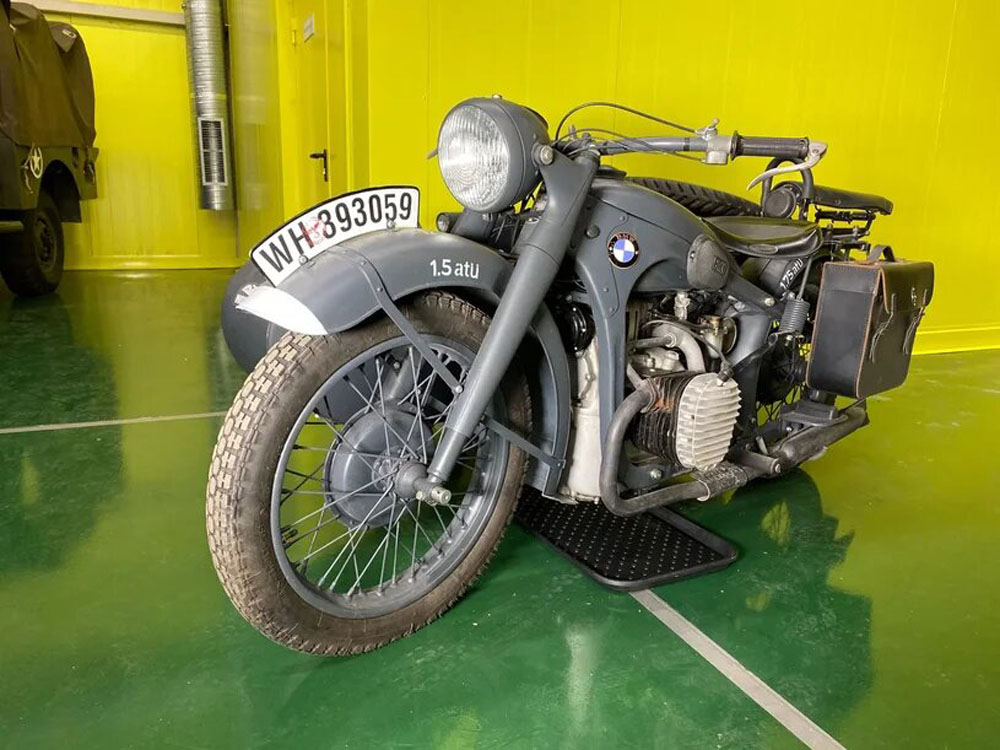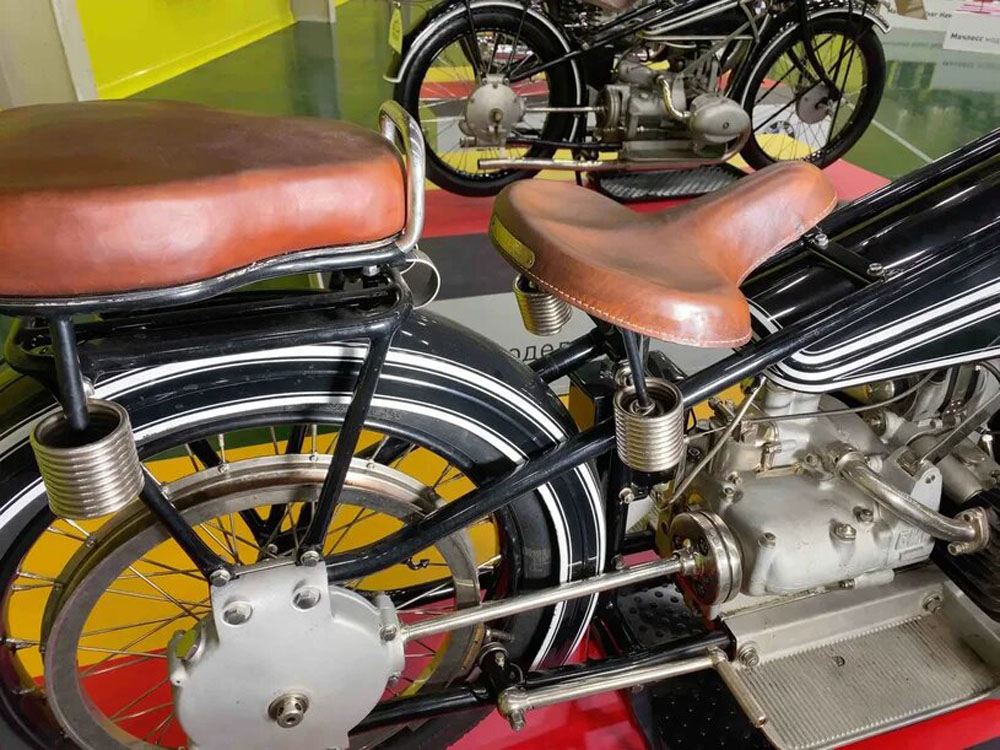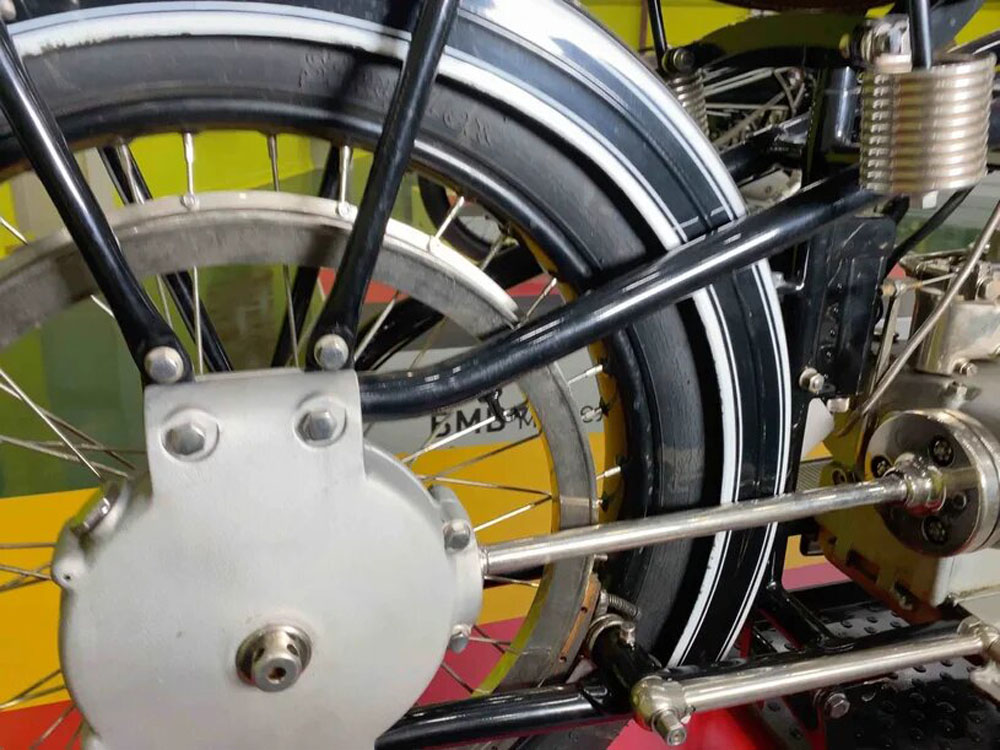The private museum Vyacheslav Sheyanov’s Motorworld Museum in Samara has a collection of unique and rare motorcycles from fourteen countries. The museum offers a glimpse into the world history of motor vehicles and the development of science and engineering, takes you into the golden age of motorcycle construction — the 30-40s of the last century. The collection features more than a hundred motorcycles from Austria, Belgium, Great Britain, Germany, Denmark, Italy, Poland, USSR, USA, France, the Czech Republic, Switzerland, Sweden, and Japan. For some models, only two or three of them are still known to exist. Some people believe that the world history of motorcycles is closely connected to the history of civilization and even to the mentality of different countries. It’s hard to argue considering that even in the design of motorcycles, you can see the rapid pace of the world’s engineering development and technological advance. Motorcycles were used both in peace and in war, their combination of beauty, power and speed attracted millions of people. The Russian collection in the Museum consists of twelve motorcycles. The soviet engineer Pyotr Mozharov deserves a lot of credit for his invaluable contribution to the development and implementation of the first Soviet motorcycles, which he was able to make due to his experience abroad.
“I see motorcycles of the first half of the last century as this fascinating world of elegant and powerful machines that display the genius of all the nations involved in the greatest tragedy and the greatest triumph of mankind — the Second World War. Each of my motorcycles is a time machine, a vehicle that takes you back into the depths of history, makes you feel it not only in your mind but in your body and your soul”, said the museum’s founder, Vyacheslav Sheyanov, in the Catalog of Private Museums of the Association.
The motorcycles in the USSR were produced on a large scale. There are still people who feel nostalgic for the old Soviet two-wheeled vehicles because many people had it as their first bike. In this article, we will talk about the history of motorcycles, though not the largest part of history, but still significant for Russia.
The motorcycle manufacturing industry in the Soviet Union was centered in Irbit, Izhevsk, Leningrad, Taganrog, and Podolsk.
PMZ A-750 is a motorcycle designed by a Soviet engineer, the founder of the domestic motorcycle industry, Pyotr Mozharov. The ideas behind this vehicle have made it a symbol of technological progress in the USSR. Even if you’ve never ridden it, you can recognize it from the Soviet comedy “Tractor Drivers” starring Marina Ladynina. Remember the song “Three tank crewmen, three cheerful friends…”? The song is originally from this movie filmed in the 30s, in the Stalinist era with its propaganda of peasant labor and Soviet engineering. The development of this model has an interesting timeline. In 1929, the workshops were established at the Izhevsk Steel Plant, five experimental motorcycles Izh were developed and manufactured there. The workshop team was headed by Pyotr Vladimirovich Mozharov, who had previously completed an internship in Germany. The three largest motorcycle manufacturers in Germany — DKW, Zündapp и Neander – had impressed the Soviet engineer. Upon his return, he was convinced that the USSR should build copies of German motorcycles and try to adapt them to Soviet road conditions. At the end of 1931, the team of Pyotr Mozharov began to design a heavy 750 cc two-cylinder engine motorcycle. The Supreme Soviet of the National Economy required them to develop and produce so-called heavy motorcycles for the needs of the Soviet Army. The motorcycle chassis design was inspired by BMW. The motorcycle was produced both with and without a sidecar. It was only possible to ride a model with a sidecar on a highway or a good dirt road. Models without sidecar had no restrictions on the quality of roads.
The top speed of the PMZ-A-750 was 90 km/h, it had a three-speed gearbox, and its fuel consumption was 6 liters of low octane fuel per 100 km. Motorcycle production on the Podolsk Mechanical Plant was slowly coming together. The PMZ-A-750 was used not only in the army but also in the civil service. People from cities, as well as rural areas, eagerly purchased the motorcycle. It turned out to have a strong structure but, as mentioned by some of the owners, was somewhat unpredictable. Most sources describing this model cite a popular interpretation of the abbreviation PMZ on the nameplate: “Poprobuy menia zavedi” (“Good luck starting me”). Probably, the numerous complaints about the motorcycle’s reliability led to the motorcycle being discontinued in 1939.
In 1939, the Soviet government was concerned about Hitler’s ambitions for Germany’s expansion. It was the middle of the Second World War, and the Soviet Union had almost no reliable motorcycles. The Germans were quite successful in designing heavy motorcycles, so in order to save time, the Soviet government decided to “adapt” the existing German designs and put them into production. The BMW R-71 was taken as a base model. Our engineers copied the vehicle and adapted it for military needs, and the end product was named M-72. Soviet Foreign Minister Vyacheslav Molotov organized a secret purchase of five BMW R-71 motorcycles in Sweden. In the spring of 1941, several plants — the Moscow Motorcycle Plant, the Kharkiv Auto Assembly Plant, the Krasny Oktyabr Plant in Leningrad — started producing this model, and in February 1942, the production of M-72 motorcycles began in Irbit, where manufacturing facilities were evacuated. The design bureau also moved to Irbit. The design of the M-72 was made having mass production in mind, and at the same time, it had many technical innovations that had never before been used in Soviet motorcycles. For example, duplex frame with enough frame stiffness, foot-operated gear-shifting mechanism, spring rear suspension, telescopic front fork, cardan drive. The motorcycle was also equipped with ammunition pouches, necessary in wartime, and a small box for spare parts and tools. The sidecar was fitted with a mount for the Degtyarev machine gun, that allowed soldiers to fire on the move. More than 330 thousand M-72 motorcycles were made from 1941 to the mid-1950s.
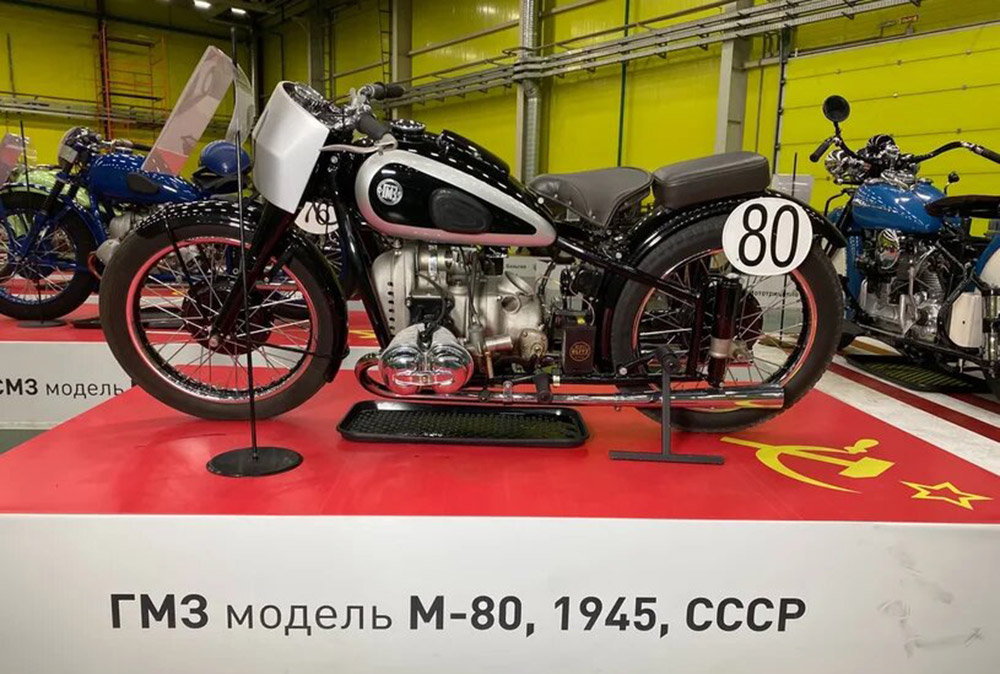
The next model, M 80, was released in 1946. Only five machines were built, but it had its own moment of glory in Soviet history. The M 80 is the first Soviet racing motorcycle made at the Gorkov Motorcycle Plant. It had a 746 cc 40 hp engine and could reach a top speed of 170 km/h. In the late 40s, all these vehicles were used in competitions, as shown by the few remaining photos. Two motorcycles were donated to the Labor Reserves sports community to encourage students of vocational training schools to participate in sports. In the summer of 1947, Merited Master of Sport of the USSR Evgeniy Gringaut set an all-time all-Union speed record at 172 km/h on his M 80.
The L-300 motorcycle was the first Soviet motorcycle mass-produced at the Krasny Oktyabr Plant in Leningrad. In the late 1920s, the Soviet government was looking for ways to organize mass production since the country was in great need of motorcycles. But soon it became clear that it was a long and challenging task, so the country’s leadership reversed its course of action and ordered to adapt foreign motorcycles to local reality and put them in production in the Soviet Union. This task was assigned to the above-mentioned group of engineers led by Pyotr Mozharov. The German bike DKW Luxus 300 was used as a starting point. The first Leningrad motorcycle had to be released in time for the opening of the Soviet Motorcycle Exhibition in Petrovsky Park in Moscow. According to available information, the Mozharov team managed to build one sample by the deadline. However, the information is inconsistent. For example, an article on the exhibition of the Soviet motorcycles in the magazine “Behind the wheel” No.14, 1930, for some reason, had no mention of such a seemingly important for the country event as the start of motorcycles mass production. During the first half of 1931, three more L-300s were assembled on the Krasny Oktyabr Plant.
At the end of July 1931, the Third All-Union Test Run of Soviet Motorcycles started in Leningrad along the route: Leningrad – Novgorod – Vyshny Volochek – Yaroslavl – Nizhny Novgorod – Arzamas – Penza – Saratov – Stalingrad – Kharkiv – Voronezh – Tula – Moscow – Leningrad. Leningrad motorcyclists completed the challenge on the L-300.
Later, the “Little Octobrists”, as people called the L-300, were widely used in the Red Army for scouting and communication. Soviet soldiers rode L-300 in combat in the Soviet-Finnish war and the early stage of the Great Patriotic War. They loved the Leningrad motorcycles because they were reliable and easy to operate. The L-300 was the bike on which Wilhelm Beckmann set the first speed record in the USSR. The motorcycle covered the distance of 1 km in 45 seconds, gaining the speed of 80 km/h. In 1936, Georgy Filonov, a ski jumping enthusiast, set a distance record, jumping on his L-300 to a height of 13 meters.
Soviet girls Irina Vladimirova, Lidia Sviridova, and Galina Teplyakova also used the “Little Oktobrists” to perform and compete, become champions, and set all-Union records.
There are not many L-300s that remained to this day. One of them is kept for future generations in the Vyacheslav Sheyanov’s Motorworld Museum.
It’s better to consider the history of the Soviet motorcycle industry in conjunction with the history of the country, otherwise, you can get a false feeling that the Soviet designers only copied foreign motorcycles and did not invent their own models. In the 1920s, the more developed countries, which had long ago transitioned from agrarian to industrial economy, had all the opportunities to develop a new industry.
Meanwhile, Russia at the beginning of the 20th century was going through political turmoil: revolutions, changes of government, and a struggle for power. The development of engineering and the construction of factories required time, and besides, everyone felt that war was coming.
Experiments by the team of Soviet engineers led by Pyotr Mozharov showed that without the foundation of three decades of foreign expertise, Soviet motorcycles could never compete with foreign models.
At the beginning of 1933, the Izhevsk Plant received technical documentation for the Leningrad L-300 motorcycle, based on which specialists developed the IZH-7. Both IZH-7 and L-300 were inspired by the German motorcycle DKW Luxus 300.
Unfortunately, the first attempt to build Izh-7 was unsuccessful due to the ignition system failure, but in 1934, the plant fixed the technical problems and build 111 motorcycles. The production lasted five years with a total volume of 5779 units.
In the mid-30s the experience of operating motorcycles showed that the army and the national economy both had the need for a middle-class motorcycle with a 500-600 cc engine.
In March 1935, People’s Commissar of Heavy Industry Sergo Ordzhonikidze instructed the Stalin Taganrog Tool Factory to design a new type of Soviet motorcycle and begin mass production. The plant was asked to produce 250 units of motor vehicles by the end of the year. One of P. V. Mozharov’s students – Yakov Kogan — was appointed chief designer of the plant’s motorcycle department. At the end of September 1935, an English prototype of the future Soviet motorcycle arrived at the factory. The chief designer department decided not to copy it but to use it as a base model and create a vehicle better adapted to the local conditions. The motorcycle was designed in a very short time and was named AM-600. The first five prototype motorcycles were built within four months. They were successfully tested in the factory, and in October 1936, the first batch of 200 units was released. At the same time as the mass production was organized, the sidecar was designed. The maximum speed of the AM-600 was 95 km/h. This model was used in large numbers in the Red Army during the Finnish and the Great Patriotic Wars. A Degtyarev machine gun was mounted on the sidecar. Since 1937, the AM-600s have regularly participated in military parades on Red Square.
The Vyacheslav Sheyanov’s Motorworld Museum presents a rather detailed research of the development of motorcycles in the 1930s-1940s. At the exhibition, you start to see that Soviet motorcycles were part of the Soviet culture. It creates a feeling that the motorcycles played an important role for the Soviet people partly because they had given the freedom of movement to the people, and maybe the Soviet motorcycles had brought freedom to all of Europe and perhaps even to the whole world.
